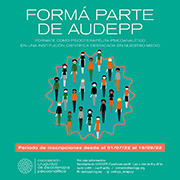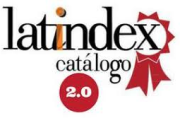POR QUÉ RECONSIDERAR EL ENCUADRE PSICOANALÍTICO TRADICIONAL. UNA MIRADA RELACIONAL
DOI:
https://doi.org/10.53693/ERPPA/2.1.5Keywords:
contextualism, relational psychoanalysis, emotion, clinical mythAbstract
Facing the drive conflict theory, the relational turn in psychoanalysis, which has emerged during the last two decades in the past century, has consolidated different schools of thought. These agree on a shared core idea: our mind is created, functions,
becomes ill, and recovers relationally. This constitutes a metapsychological paradigm shift.
Nevertheless, the classic clinical approach has been conveyed as if it were a mantra so much so that to be considered a clinical psychoanalist you should follow their rules. This paper aims to make visible three substantial elements for its modification:
the incidence and consideration of the context, the relevance of emotions, and the qualitative importance of the therapist-patient bond as a change agent. Faced with the traditional technical myths of neutrality, abstinence, and anonymity, there is a need for
a different “therapeutic receving matrix”: an empathic perspective, a dialogic position, a warm, humble, humanist and equitable position, as well as an hermeneutic of trust from the psychotherapist in this particular dyad created with each patient.
Downloads
References
BOLLAS, C. (1987). La sombra del objeto: psicoanálisis de lo sabido no pensado. Amorrortu.
BAUMAN, Z. (2003). La modernidad líquida. Fondo de Cultura Económica.
CODERCH DE SANS, J. (2010). La práctica de la psicoterapia relacional. Ágora Relacional.
FREUD, S. (1980). Consejos al médico sobre el tratamiento psicoanalítico (1912). En Obras completas (vol. xii, pp. 107-120). Amorrortu.
HEIMANN, P. (1978). Sobre la necesidad de que el analista sea natural con su paciente. En J. P. Jiménez (trad.), Provocación y tolerancia (pp. 215-230). Suhrkamp Verlag.
HERSKOVITS, M. (1952). El hombre y sus obras. La ciencia de la antropología cultural. Fondo de Cultura Económica.
IACOBONI, M. (2010). Las neuronas espejo. Katz.
LICHTENBERG, J. (1991). El modo de percepción empático y perspectivas alternativas para el trabajo psicoanalítico. Revista de Asociación Escuela Argentina para Graduados, 17.
MITCHELL, S. (2015). Influencia y autonomía en Psicoanálisis. Ágora Relacional.
ORANGE, D. (2013). El desconocido que sufre. Cuatro Vientos.
ORANGE, D., ATWOOD, G. y STOROLOW, R. (2012). Trabajando intersubjetivamente. Contextualismo en la práctica psicoanalítica. Ágora Relacional.
ORNSTEIN, A. y ORNSTEIN, P. (1998). Empatía y diálogo terapéutico. En Anuario de la Psicología del Self, 3. Universidad Católica Argentina.
RIERA, R. (2011). La conexión emocional: Cómo se forma nuestra manera espontánea y no voluntaria de reaccionar emocionalmente. Octaedro.
STERN, D. (2017). El momento presente. Cuatro Vientos.
STOLOROW, R. y ATWOOD, G. (2004). Los contextos del ser. Herder.










